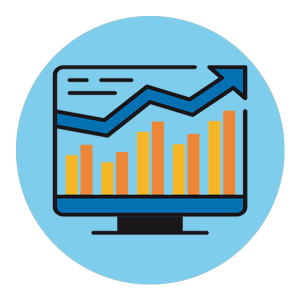Description
This three-hour, video-based course, the second of the Foundations of Economic Development Research eLearning program, provides novice economic developers and researchers with a practical introduction to research methods, models, and tools to support state and regional economic development strategies. Course exercises demonstrate and reinforce the basic analytical skills needed to address real-world questions that policymakers and practitioners encounter.
Course Objectives:
In this sequel to the introductory course on data sources, we introduce you to the important theories, concepts, and analytic techniques that underpin today’s economic development and research field. Completing this course will prepare you to:
- Develop an economic profile of your region, using economic base theory and other standard techniques.
- Identify your region’s unique strengths and opportunities through such methods as determining location quotients (LQs) and performing trend and shift-share analysis.
- Assess regional economic specialization and explore its implications.
- Measure economic and fiscal impacts.
- Position your region to attract, expand, and retain employers/businesses:
- Conducting competitive market intelligence research.
- Determining which factors are most likely to drive employers’ business location decisions.
- Conduct labor market analysis, using a variety of data sources.
- Measure the scope and scale of your region’s industry clusters–and map their composition and interrelationships.
- Use U.S. Census Bureau tools to conduct Longitudinal Employment Household Dynamics (LEHD) research for your region.
- Deliver research findings in an effective manner.
Course Content
SECTION 1: COURSE INTRODUCTION
Overview, Format, and Objectives
- Course Prerequisites and Welcome
- Glossary of Economic Research Terms and Techniques
SECTION 2: LAYING A FOUNDATION FOR ECONOMIC MODELING
Defining and Measuring Your Regional Economy
- Measuring the Regional Economy: Specialization and Diversity
- Activity: Further Exploring Location Quotient (LQ)
- Activity: Using an Interactive Map to Explore LQs
- Self-assessment: Determine a Regional Industry’s Location Quotient
Modeling Your Region's Economic Activities
- How Economic Base Theory is Used to Model a Regional Economy
- Using Multipliers to Predict Regional Economic Impacts
- Exercise: Estimating the Export Base and Region-wide Multiplier for a Region
- Self-assessment: Calculating a Region-wide Multiplier
SECTION 3: METHODS FOR RESEARCHING THE COMPETITIVE STRENGTHS OF A REGION
Understanding Business Location Decisions and Evaluating Competitive Strengths
- How to Conduct Competitive Market Intelligence Research
- Exercise: HQ2 and You – Analyzing Amazon’s Request for Proposals
SECTION 4: WORKFORCE AND GROWTH–USING DATA TO TELL YOUR REGION’S LABOR MARKET STORY
Using Data to Answer Questions About Your Local Workforce
- Researching and Analyzing Your Region’s Labor Market
- Self-Assessment: Which Labor Market Data Source Should You Use?
Analyzing Growth Trends in Your Region's Industries
- Using Shift-Share Analysis to Reveal Your Most Competitive Industries
- Case Study: Applying Shift-share Analysis to Understand Post-Recession Growth (Nevada)
SECTION 5: MAPPING INDUSTRY CLUSTERS, ANALYZING INTERDEPENDENCIES, AND IDENTIFYING TARGETS
Understanding the Concentration of Related Industries in Your Region
- Analyzing and Mapping a Region’s Industry Clusters
- Exercise: Explore Pre-defined Clusters Using Clustermapping.us
Using Value Chain Mapping to Analyze Linkages and Interdependencies
- Recognizing Inter-industry Linkages and Value Chains
- Exercise: Research “Links” in a Value Chain
Using Cluster Analysis to Identify Targets for Industries in Your Region
- Understanding Your Targets
SECTION 5: TOOLS FOR EVALUATING AND COMMUNICATING ECONOMIC AND FISCAL IMPACTS
Conducting Economic and Fiscal Impact Analysis
- Principles of Economic and Fiscal Impact Analysis
- Case Study: Economic Impact of the Coal Industry in Pennsylvania
- Case Study: Fiscal Impacts of a Mixed-Use Development in Northern Virginia
- Self-Assessment: Calculate Fiscal Impacts of a Proposed Project
If you have questions about this course or experience any technical issues, please e-mail elearning@c2er.org.


